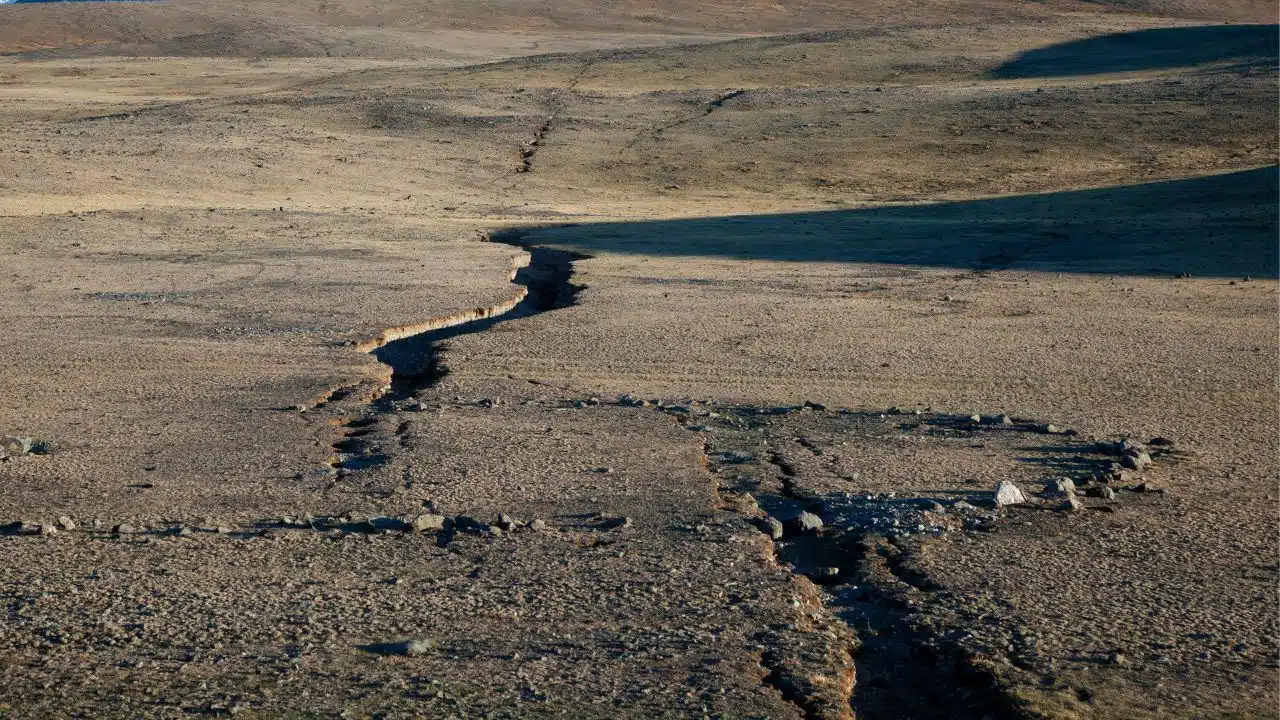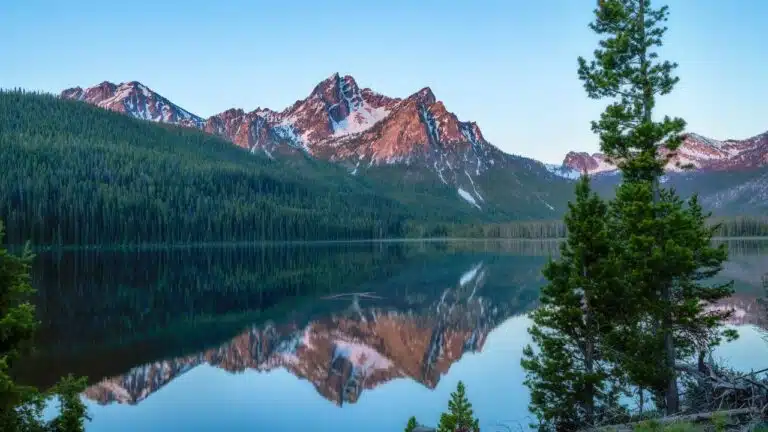Earthquakes happen almost every day in Hawaii, but you wouldn’t know it by visiting. The gorgeous beaches and lush jungles seem unbothered by quaking soil or trembling forests. That’s because most quakes that occur are so small in intensity they can’t be seen or felt. But when a big earthquake rolls around, it’s an entirely different story, one of damaged buildings, rolling tsunamis, and cracked earth.
Thanks to the presence of the world’s most active volcano, and others, the Hawaiian Islands see their fair share of large earthquakes. So, here is your traveler’s guide to earthquakes in Hawaii and how to stay safe on your next island visit.
Table of Contents
Hawaii Earthquake FAQs
Earthquakes in Hawaii are slightly different from the earthquakes you might experience in California. Most quakes on the west coast result from movement along the fault lines. In contrast, much of Hawaii’s earthquake action is formed by volcanic activity and magma movement. But depending on where Hawaii’s earthquakes originate, the severity can fluctuate. So, here’s everything you need to know about earthquakes in Hawaii and what sets them apart.
Are There Earthquakes in Hawaii Today?
Earthquakes—unlike hurricanes—are a common hazard in Hawaii and have been since before recordings began in the early 1800s. Thanks in part to the volcanic activity in Hawaii, the islands experience over a hundred Magnitude 3 or greater earthquakes annually.
3 Types of Earthquakes in Hawaii
According to the United States Geological Survey, the types of earthquakes experienced by the Hawaiian Islands are based on the source. Earthquakes in Hawaii originate from three general areas: in the volcanoes, along the volcano-ocean floor, and within the mantle.
1. Volcanic
One of the most common but least dangerous types is volcanic earthquakes, which occur in conjunction with magma movement and volcanic eruptions. As magma moves through the crust and breaks rock, it can produce stress that leads to faults.
These earthquakes usually rate under a magnitude four. Most people don’t even notice them, which is good considering their frequency. Because Hawaii’s Big Island is home to some of the most active volcanoes in the world, including Kilauea and Mauna Loa, these earthquakes often occur on Hawaii Island. They’ll probably even happen while you’re on vacation!
2. Tectonic
Some of the most devastating earthquakes in Hawaii are tectonic earthquakes. These occur along tectonic faults, usually on the boundary between the volcano and the ocean floor. Though plates are constantly moving, when they get stuck and grind together, it causes pressure to build up. When this pressure is released, vast amounts of energy travel through the earth’s crust and cause an earthquake.
Two kinds of tectonic earthquakes occur on the islands. The first usually occurs inside the volcano or along the upper crust under the volcano. These moderate earthquakes don’t rank higher than an M5 and only cause minor damage. The second originates along the décollement fault plane. These slips have caused some of the largest, up to M8, and most catastrophic earthquakes in Hawaii’s history.
3. Mantle
Earthquakes that start in the mantle can cause similar damage to tectonic earthquakes. As the earth’s upper crust and mantle bend and flex under the pressure of the island and volcanoes above, this activity creates stress in the mantle. As temperatures and weights fluctuate, these small changes can directly lead to earthquakes.
Many of the worst earthquakes that occur north of the Big Island originate from this mantle area.
How Often Do Earthquakes Happen in Hawaii?
High volcanic activity in Hawaii makes earthquakes a frequent occurrence. The Hawaiian Islands actually experience thousands of earthquakes per year. While most don’t rank high in magnitude and can’t be felt, earthquakes of a greater magnitude than three happen roughly every three and a half days.
An earthquake’s magnitude differs from its intensity, so just because an M3 earthquake occurs doesn’t mean you’ll feel it. Whether or not an earthquake is felt depends on several factors, like distance from the quake and even the type of soil—vibrations travel more easily through soft sediment than hard rock.
But earthquakes are a daily part of island life. If you ask yourself when the last earthquake at any given time was, chances are good that there have been several just in the past 24 hours!
Is Hawaii Safe from Earthquakes?
Unfortunately, Hawaii has one of the highest earthquake hazards in the US, with the biggest hazard centered around Hawaii Island. Though the bulk of earthquakes are harmless, many have the potential to be devastating, with some large-scale earthquakes even resulting in tsunamis.
Most of Hawaii’s quakes are shallow earthquakes. Less than 14 miles deep and relatively harmless, these quakes cause minor damage and go unnoticed by all but the most sensitive recording instruments. However, other earthquakes that originate from deeper in the earth, 14-35 miles, are more destructive. Some large-scale earthquakes even cause tsunamis.
That happened in 1975 when an earthquake hit the Puna district on Hawaii’s Big Island. The shocks generated a terrifying tsunami that climbed as high as 48 ft and killed two people. Other earthquakes have had even more damaging effects, like the earthquake that hit Hawaii in 1868. Originating from the southeast flank of Mauna Loa, the earthquake reached a magnitude of 7.9 and a maximum Mercalli intensity of X. The quake—and the ensuing landslides and tsunami it caused—still ranks as the largest and deadliest earthquake in Hawaii’s history.
Where Do Most of Hawaii’s Earthquakes Occur?
Most earthquakes in Hawaii take place on Hawaii Island, thanks to the presence of the world’s most active volcano, Kilauea, and other spots of high volcanic activity, including Mauna Loa and Kama‘ehuakanaloa. The earthquakes that occur in these areas are caused mainly by the movement of magma within the volcanoes.
Seismic activity often correlates with volcanic activity. For example, in the days before the eruption at Mauna Loa, the volcano experienced a period of heightened unrest. The Hawaiian Volcano Observatory (HVO) reported that earthquake frequency jumped from roughly 10 per day in the summer to almost 100 per day in September. The elevated seismic activity eventually prompted Hawai’i Volcanoes National Park officials to close the Mauna Loa summit backcountry. A few weeks later, the Hawaii County Civil Defense Agency issued a volcano advisory alert.
However, earthquakes are only an indication of possible activity and not a guarantee of an imminent eruption. So, if you feel the ground shaking, you don’t immediately have to worry about exploding volcanoes. However, because large earthquakes come with a tsunami threat, it’s best to stay alert and get to high ground if necessary.
How to Be Prepared for an Earthquake in Hawaii
Though most earthquakes in Hawaii are only detectable through sensitive instruments, the Hawaiian Islands have a long history of damaging earthquakes that make hazard preparedness essential. Here are seven quick tips for handling earthquakes in Hawaii.
- Recognize the signs. Earthquakes are often preceded by increasingly louder rumbling sounds or a violent jolt before the shaking starts.
- Know your safe spots. The safest areas are away from the walls, under a sturdy table, or in bed with a pillow over your head. Do not hide in doorways.
- Take shelter. If you’re inside a building, drop to the floor, take shelter under a sturdy bit of furniture, and hold on to prevent it from moving.
- Move to higher ground. If you’re outside during an earthquake, drop and take cover first. When the shaking stops, move to higher ground, at least 100 ft above sea level, immediately.
- Stay out of danger zones. Avoid areas with rocks or steep cliffs, as these are susceptible to landslides. Stay away from beaches.
- Prepare an emergency kit. Have a kit handy with first-aid supplies, device chargers in case of power outages, and cash (small bills) for the same reason.
- Plan a meet-up location. If you’re out exploring the islands, getting separated from loved ones happens all too often. So, plan a location to meet up and regroup in advance. This could be where you’re staying or somewhere nearby.



